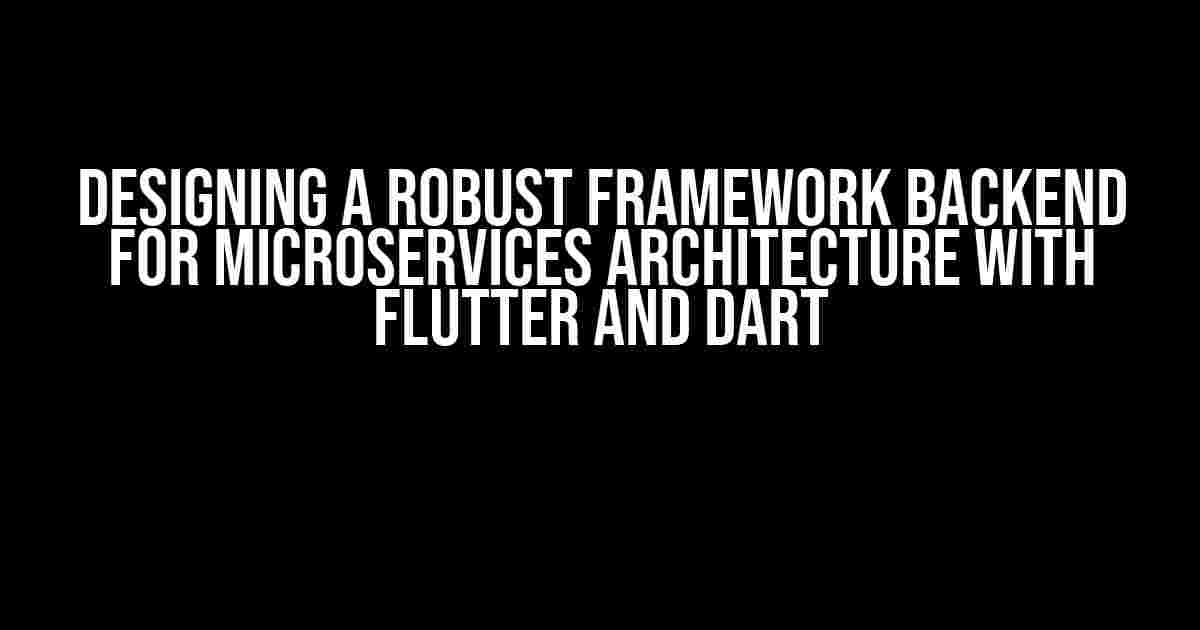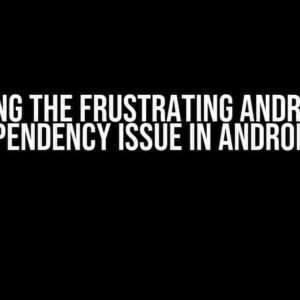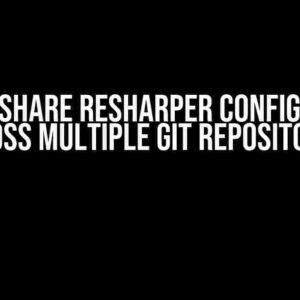As the adoption of microservices architecture continues to rise, the need for a robust framework backend to support it has become increasingly important. In this article, we will explore the design of a framework backend for microservices architecture using Flutter and Dart.
Understanding Microservices Architecture
Microservices architecture is an architectural style that structures an application as a collection of small, independent services that communicate with each other using APIs. Each microservice is responsible for a specific business capability and can be developed, tested, and deployed independently of other services.
The benefits of microservices architecture include increased flexibility, scalability, and resilience. However, it also presents new challenges, such as increased complexity, distributed transaction management, and communication between services.
The Role of a Framework Backend in Microservices Architecture
A framework backend plays a crucial role in microservices architecture by providing a set of common services and tools that enable communication, integration, and coordination between microservices. A robust framework backend should provide the following features:
- Service discovery and registration
- API gateway and routing
- Authentication and authorization
- Data storage and retrieval
- Message queuing and event-driven architecture
Why Choose Flutter and Dart for the Framework Backend?
Flutter and Dart are a powerful combination for building a framework backend for microservices architecture. Here are some reasons why:
- Flutter is an open-source mobile app development framework created by Google that allows for fast and efficient development of cross-platform apps.
- Dart is a modern, object-oriented programming language developed by Google that is used for building Flutter apps.
- Flutter and Dart provide a fast and efficient way to build scalable and reliable backend services.
- Dart’s async/await syntax makes it easy to write asynchronous code, which is essential for building scalable and concurrent backend services.
Designing the Framework Backend with Flutter and Dart
The framework backend can be designed as a layered architecture, with each layer providing a specific set of services and tools. The layers are:
- Infrastructure Layer: This layer provides the underlying infrastructure for the framework backend, including database storage, message queuing, and authentication services.
- Service Layer: This layer provides the business logic for the framework backend, including service discovery, API routing, and authentication services.
- Application Layer: This layer provides the interface for the microservices to interact with the framework backend, including API gateways and data storage.
The framework backend can be built using Flutter’s server-side framework, flutter_server, which provides a set of tools and libraries for building scalable and reliable backend services.
Conclusion
In conclusion, designing a robust framework backend for microservices architecture using Flutter and Dart is a viable option. By leveraging the strengths of Flutter and Dart, developers can build scalable, reliable, and efficient backend services that support the needs of microservices architecture.
By following the layered architecture design and utilizing the features of Flutter and Dart, developers can create a robust and efficient framework backend that supports the communication, integration, and coordination between microservices.
Frequently Asked Questions
Get answers to your burning questions about framework backend para arquitectura de microservicios con Flutter y Dart!
What is the primary benefit of using a microservices architecture with Flutter and Dart?
The primary benefit of using a microservices architecture with Flutter and Dart is that it allows for greater flexibility, scalability, and maintainability of the application. By breaking down the application into smaller, independent services, developers can work on each service independently, making it easier to update and deploy changes.
How does Flutter’s architecture support the development of microservices?
Flutter’s architecture is designed to support the development of microservices by providing a modular and flexible framework that allows developers to break down their application into smaller, independent modules. This enables developers to deploy and manage each module independently, making it easier to scale and maintain the application.
What role does Dart play in a microservices architecture with Flutter?
Dart is the programming language used to develop microservices with Flutter. Dart provides a concise and expressive syntax, making it easy to write code that is both readable and maintainable. Additionally, Dart’s async/await syntax makes it well-suited for developing concurrent and asynchronous code, which is essential for microservices architecture.
How do I choose the right framework for my microservices architecture with Flutter and Dart?
When choosing a framework for your microservices architecture with Flutter and Dart, consider the specific needs of your application, such as scalability, security, and performance requirements. Research and evaluate different frameworks, such as those based on RESTful APIs, GraphQL, or gRPC, and choose the one that best fits your needs. Additionally, consider factors such as community support, documentation, and ease of use.
Can I use a single framework for all my microservices, or do I need to use different frameworks for each service?
It’s not necessary to use a single framework for all your microservices. In fact, using different frameworks for each service can be beneficial, as it allows you to choose the best framework for each service’s specific needs. However, using a single framework for all services can simplify development and maintenance, as you only need to learn and maintain a single framework. Ultimately, the choice depends on the specific requirements of your application and the trade-offs you’re willing to make.



